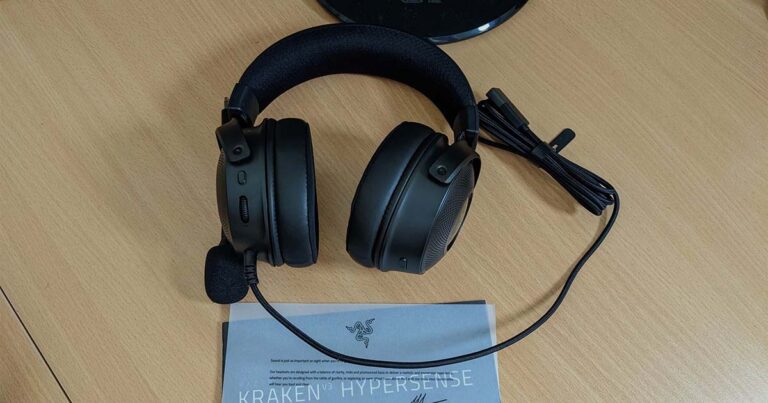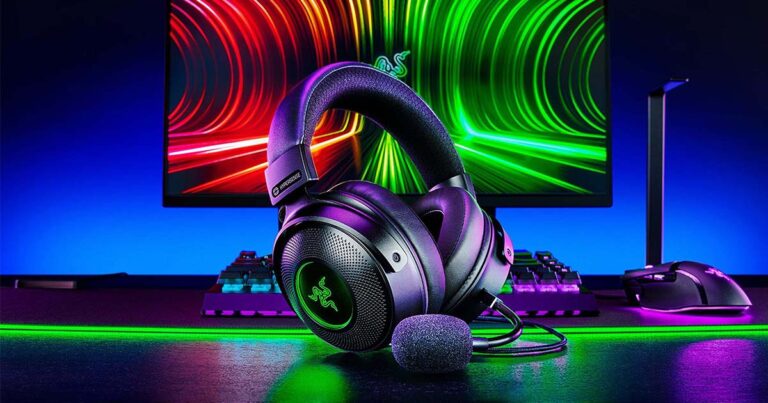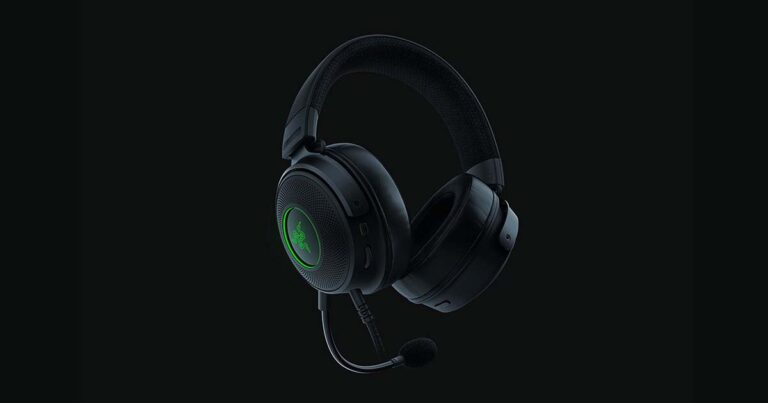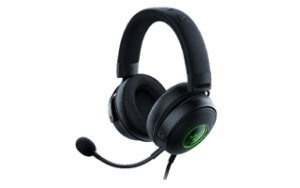A wired headset for the PC gamer who wants the option of feeling what they’re hearing.
Razer Kraken V3 HyperSense review: Feel the sound
Razer Kraken V3 HyperSense price (in Australia)
The Razer Kraken V3 HyperSense ain’t cheap. If you’re paying full price, you’re looking at spending $224.95. Even if you can get the Razer Kraken V3 HyperSense for around $200, that’s still a pretty penny for a wired headset. HyperX, RIG and even Razer have wireless headsets for under $200, with the Xbox Wireless Headset a great choice for around $150.
If you do want the Razer Kraken V3 HyperSense, below is how much you can expect to pay:
Razer Kraken V3 HyperSense sound

Even with haptic feedback disabled, the Razer Kraken V3 HyperSense boasts big sound, which follows in the footsteps of the Razer Nommo Pro speakers. Razer ain’t no slouch when it comes to making quality headsets, and while there are cheaper options from Razer, the Razer Kraken V3 HyperSense has 50mm drivers. Translation: big, full-bodied audio.
Whether you’re listening to tunes, watching movies or playing games, the Razer Kraken V3 Hypersense offers impressive audio. A word to the wise, though: if you have way too many devices like I do, don’t fall back on connecting the Razer Kraken V3 HyperSense to a USB audio hub, as you will get crackling audio. Direct connections to a free USB port on your PC are best, and don’t try to wiggle out the USB cable on the headset side (it’s very, very fixed).
While the Razer Kraken V3 HyperSense is also compatible with PlayStation and Switch consoles (only in docked mode for Switch), it’s clearly built primarily for the PC. Support for 7.1 THX Spatial Audio offers a viable competitive edge online, particularly in first-person shooters care of accurate positional audio. The detachable cardioid microphone is also a nice touch and offers clear communication, which your squaddies will surely appreciate.
Impressively, the Razer Synapse software offers some great customisation options. What starts out with basic volume and haptic intensity adjustments, extends into THQ Spatial Audio tweaks (auto by default does a great job), as well as equaliser enhancements for audio and (impressively) microphone.
Anyone who’s worn a Razer headset before shouldn’t be surprised to hear that the Razer Kraken V3 HyperSense is an incredibly comfortable headset. The hybrid fabric/leatherette cushions give the headset a premium look, without compromising on comfort during extended use. The leatherette on the outside of the earcups with just the right amount of fabric on the inside help keep the metaphorical sweat in the game and not literally on your headset. Meanwhile, memory foam keeps the headset comfortable in use and looking fresh out of the box when it’s waiting to be reattached to your noggin.
The earcup design also adds passive noise cancelling which, combined with the big sound and a respectable volume range, was enough for me to not hear a fire-alarm test mere metres away. I like that the earcups incrementally and individually extend for bigger noggins (or matted lockdown hair), while the soft headband cushion encourages a tighter fit without compromising comfort.
Easy-to-use physical controls are primarily located on the left earcup. There’s an easy-to-feel volume dial and mute button, but it’s a shame Razer didn’t use the extra space for a chat/game balance dial, too. The left earcup is also where the detachable mic goes, and there’s a single button beneath the right earcup to cycle through low, medium and high vibration settings.
Note that unlike other headsets, the Razer Kraken V3 HyperSense doesn’t have earcups that fold in. While this headset will sit happily on a desk, they look great on a monitor hook or stand. Speaking of the look, Razer Synapse has a dedicated tab for RGB lighting, so those who love that kind of thing can tweak it all in here.
Razer Kraken V3 HyperSense haptic feedback

Apart from the Razer brand, 50mm-driver sound and THX Spatial Audio, the big thing you’re paying for with the Razer Kraken V3 HyperSense is the haptic feedback. Basically, it’s like strapping contextually vibrating console controllers to your ears. So, how is it? For me, it’s a feature I quickly disabled during everyday use.
Even on the lowest setting, the haptic feedback doesn’t add a lot to the everyday soundscape of music and YouTube videos. But, in fairness, it’s not meant for that. Medium is about the right spot to get the feel of haptic feedback without it being overwhelming, especially for gaming.
Any game with big sounds will quickly show you how it feels, and after the initial weirdness, haptic feedback does have more than a few moments of adding to the immersion. Hell Let Loose, in particular, was the best test game to feel the oomph of bombing runs, grenade explosions, and the crack of firefights.
Is the Razer Kraken V3 HyperSense headset worth buying?

The Razer Kraken V3 HyperSense gaming headset earns points where it counts: big sound, a viable competitive advantage, plus all-day comfort rolled into a single, sleek offering. But the catch is these cans ain’t cheap, and that “HyperSense” part of the title will ultimately determine their value. If you’re okay investing a fair chunk in a wired headset, you’ll get a solid PC headset. That said, we can’t help but feel you’re better off opting for something wireless (like the great Razer Barracuda X).
Razer Kraken V3 HyperSense FAQ
Related Articles






